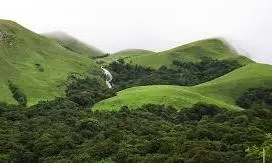
24-million-year-old fossil in Assam connects Northeast India to Western Ghats’ ancient flora
text_fieldsA fossil discovery in Assam’s Makum Coalfield has unveiled a deep botanical link between India’s northeast and the Western Ghats.
Researchers from the Birbal Sahni Institute of Palaeosciences (BSIP), Lucknow, have identified fossilised leaves dating back 24 million years that closely resemble modern species of the Nothopegia genus—plants now found only in the Western Ghats.
The findings, published in the journal Review of Palaeobotany and Palynology, suggest that the Nothopegia once thrived in the lush tropical climate of northeast India.
However, dramatic shifts in the region's climate and geography—driven by tectonic movements and the rise of the Himalayas—altered local weather patterns and temperatures, making the northeast inhospitable to many tropical species, including Nothopegia. While it disappeared from Assam, the plant continues to survive in the climatically stable Western Ghats.
“Fossil evidence from northeast India suggests that the genus once had a much broader range during the late Paleogene, thriving under equable climatic conditions similar to those found in its present habitat in the Western Ghats,” the study noted.
Using the CLAMP method (Climate Leaf Analysis Multivariate Program), the team reconstructed past climate conditions and concluded that the northeast had a warm, humid climate during the late Oligocene—closely resembling that of the present-day Western Ghats.
The Ministry of Science and Technology highlighted the significance of this study, calling it a glimpse into how ancient plant species responded to long-term climate change. The research also underscores the vulnerability of biodiversity hotspots, warning that similar climate pressures today could wipe out endemic species. Recent projections even suggest the Western Ghats could lose all of their endemic plants by 2050.
“This fossil discovery is a window into the past that helps us understand the future,” said Dr Harshita Bhatia, a co-author of the study, who emphasised the urgent need to conserve biodiversity strongholds like the Western Ghats where remnants of prehistoric ecosystems still persist.























